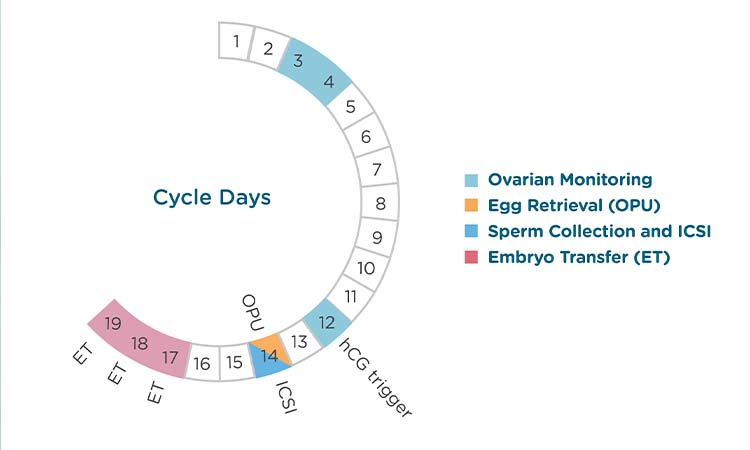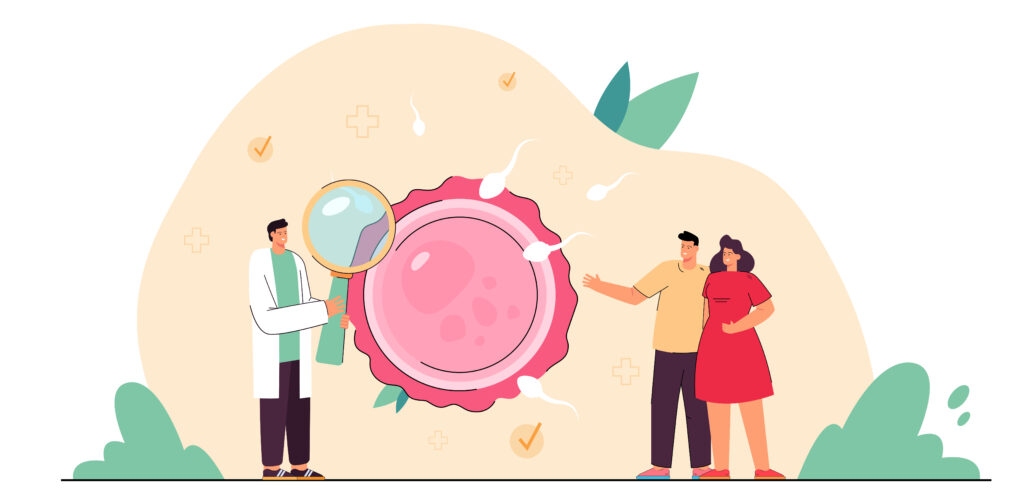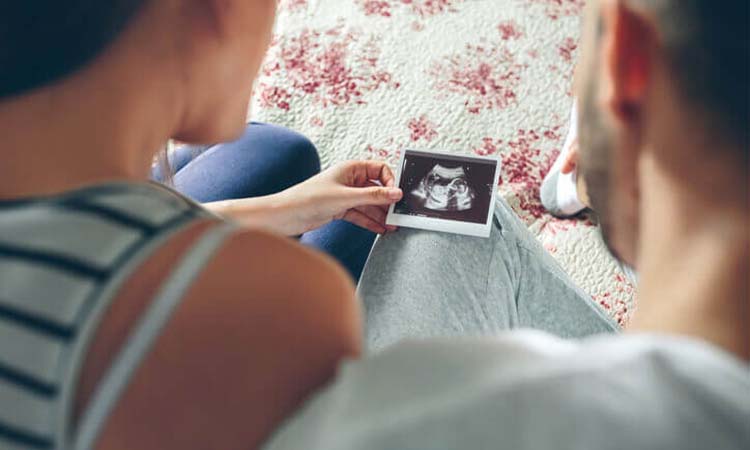IVF is a boon for those who aren’t suitable to conceive there baby and looking for there natural child. Below mention way will describe the factual process followed for this procedure. For egg donation, either tone egg or patron egg are used. Below mention graph will explain the rate of drop of conceiving with tone egg and this result also let you know why to indurate your own egg before.
Men youngish than 40 have a better chance of begetting a child than those aged than 40. The quality of the sperm men produce seems to decline as they get aged. Their food habits and living also determines there sperm quality. When you include healthy diets on day to day life also it increases fertility to a massive position.
Utmost men make millions of new sperm every day, but men aged than 40 have smaller healthy sperm than youngish men. The quantum of semen (the fluid that contains sperm) and sperm motility ( capability to move towards an egg) drop continually between the periods of 20 and 80.
Step 1 Control Ovarian Hyperstimulation (COH)
COH is done using different protocols. The most common bone is a long GnRH-Agonist (Lupron) protocol where the stashing of gonadotropin hormones is suppressed to help unseasonable ovulation. Once optimal repression is achieved, the coming step is the reclamation of multiple follicles by diurnal injections of gonadotropins. Ultrasound imaging and hormone assessments are used to cover follicular development. When the lead follicles have reached the applicable size, the final development of eggs is completed by HCG administration. Egg reclamation is listed 34 – 36 hours after HCG injection.
Step 2 Egg Retrieval
It’s a veritably important procedure as different croakers have the different condition for reclamation ( From egg patron ). Numerous croakers do n’t work with virgin egg benefactors. Since the sharing of egg patron biographies isn’t legal so we will only partake their details if there will be assurance and after patron price paid. Egg reclamation is performed in a surgical suite under intravenous sedation. Ovarian follicles are aspirated using a needle guided by transvaginal ultrasonography. Follicular fluids are scrutinized by the embryologist to detect all available eggs. The eggs are placed in a special media and dressed in an incubator until copulation.
Step 3 Fertilization and Embryo Culture
Still, roughly 50, 000 to 100, If sperm parameters are normal. This is called standard copulation.
The ICSI fashion is used to fertilize mature eggs if sperm parameters are abnormal. This procedure is performed under a high-powered microscope. The embryologist picks up a single spermatozoon using a fine glass microneedle and injects it directly into the egg cytoplasm. ICSI increases the chance that fertilization will do if the semen sample has a low sperm count and/ or motility, poor morphology, or poorprogression.However, sperm may be attained via a surgical procedure, If there are no sperm in the exclaim. ICSI is always used to achieve fertilization if the sperm is surgically recaptured.
Fertilization is assessed 16 – 18 hours after copulation or ICSI. The fertilized eggs are called zygotes and are dressed in a especially formulated culture medium that supports their growth. They will be assessed on the alternate and third day afterretrieval.However, they may be named to grow to the blastocyst stage in a especially designed culture medium, If sufficient figures of embryos parade good growth and development. Blastocyst culture has several advantages. Embryos at this stage have a advanced eventuality for implantation, thus smaller embryos can be transferred on day 5 to reduce the chance of multiple gravidity. Low figures of embryos and poor embryo quality reduce the chances for good blastocyst development. A day 3 embryo transfer is recommended for cycles with low figures and/ or poor quality.
Step 4 Embryo Quality
Embryo fertility is determined by PGS (Pre-implantation inheritable webbing. After PGS testing we indurate the most rich embryos and after first fresh embryo if the process failed also we use the remaining frozen embryos. There are several criteria used to assess the quality of the embryo. This is especially important when trying to decide which embryos to choose for embryo transfer. Beforehand in the morning on the day of your transfer, the embryos are estimated and mugged by the embryologist. The embryologist and your croaker will decide, grounded on the rate of development and appearance of the embryos, which and how numerous embryos are recommended to be transferred. Generally, embryos are transferred at the fractionalization stage ( day 3 after oocyte reclamation) or at the blastocyst stage ( day 5). In the lab, a grading system is used to mokes the quality of the embryos.
Fractionalization Stage Day 3 Transfers
Day three embryos are called fractionalization stage embryos and have roughly 4 – 8 cells. When assaying these embryos, we not only look at the number of cells but also how symmetrical they’re and whether there’s any fragmentation. Fragmentation occurs when the cells divide inversely, performing in cell-suchlike structures which crowd the embryo. No fragmentation is preferable but some is respectable. In our lab, we classify embryos into grades 1 through 4. Grade 4 represents the stylish quality embryos.
Day 5 Blast Day 5 Transfers
Day 5 embryos are called blastocyst embryos. At this stage, the embryos have increased in size and are indeed more advanced. They act a ball of cells with fluid outside. One of the effects we look for at this stage is how expanded these embryos are. The more expanded, the better the quality of the embryo. These embryos are also classified by a number scale, 1 through 6. Grade 6 represents the stylish quality blastocyst.
Step 5 Embryo Transfer
Embryos are transferred on day 3 when they’re at the fractionalization stage (6 – 8 cells) or on day 5 when they’ve reached the blastocyst stage. Embryo transfer is a simple procedure that doesn’t bear any anesthesia. Embryos are loaded in a soft catheter and are placed in the uterine depression through the cervix.



